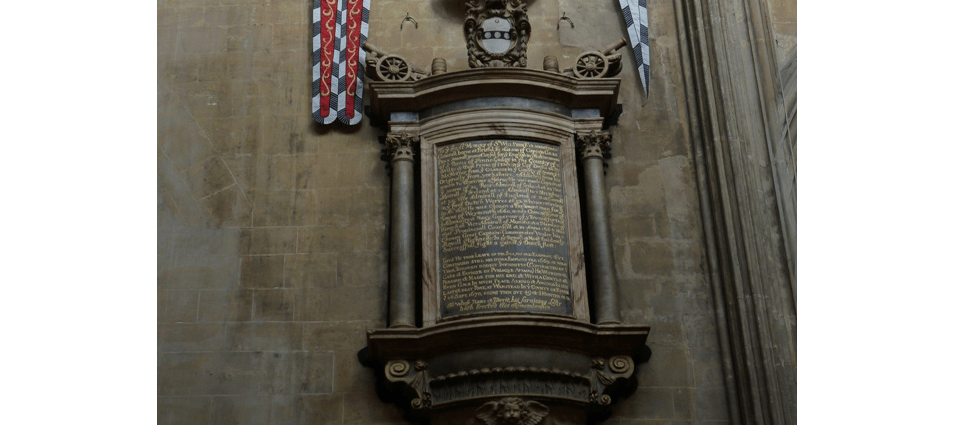William Penn was born in Bristol in 1621. He became a career naval officer commanding as “General at Sea” the English fleet which captured Jamaica from the Spanish in 1655. He was the hero of the naval victory at the Battle of Lowestoft against the Dutch in 1665. He lent substantial sums of money to King Charles II.
The Admiral’s son, also William was expelled from Christ Church Oxford for religious non-conformity. He became a member of the Society of Friends (the Quakers) and met their founder, George Fox in Bristol on the latter’s return from America. King Charles II discharged his debt to the Admiral via his son William by a grant of extensive territory in North America for the development of a Quaker colony there. William Penn wanted to call this territory “New Wales” or “”Sylvania” (Latin for “woodlands”) but the King insisted on his old supporter’s name being included, hence “Pennsylvania”.
The Admiral is buried in St Mary Redcliffe church where there is a fine memorial to him that includes his Coat of Arms and naval pennants. Your correspondent, in his previous incarnation as a Blue Badge Tourist Guide, was once standing outside of the North Porch of St Mary Redcliffe describing all this to a group of American Tourists and concluded his little presentation with the words “You will find his Arms mounted on the North wall of the Nave” and hearing the wonderful reply with a strong American accent “So what did they do with his legs?”
